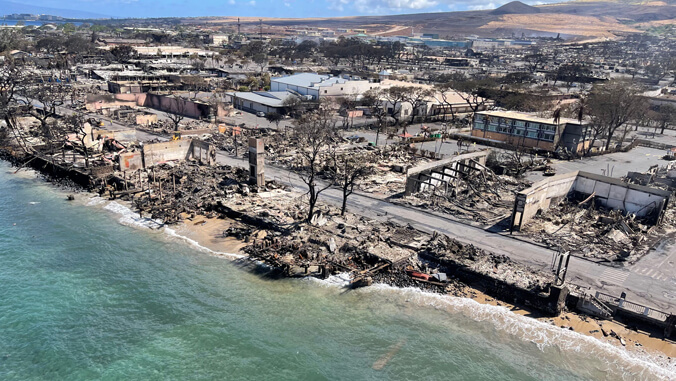
Hawaiʻi’s economy has been resilient in the face of weakening U.S. and global economies, high interest rates and the slower return of Japanese travelers. According to the University of Hawaiʻi Economic Research Organization’s (UHERO) fourth quarter forecast for 2023, deceleration in key visitor markets will produce slower growth in 2024. But, absent a U.S. recession, moderate gains will resume in 2025. While economic fallout from the Maui wildfires has been somewhat smaller than feared, the rebuilding path will be long, and there are considerable uncertainties about how it will proceed.
Key takeaways from the December 15 report:
- The U.S. has outperformed most advanced economies this year. High interest rates have weighed on investment, and the labor market has softened. Robust consumer spending will slow as excess savings dwindle, helping to bring inflation into the Fed’s target range and achieve a “soft landing” 1.1% growth next year.
- Canada and Japan’s real gross domestic product contracted in the third quarter. The U.S. slowdown will restrain Canada’s economy, while Japan’s move toward tighter monetary conditions to combat inflation will ease pressure on the yen. Australia’s inflation fight is proving difficult, and its exports have been weak as China deals with a property market meltdown. Global growth in 2024 will be similar to this year’s tepid 3% pace.
- The Maui visitor industry has been recovering faster than we anticipated, and visitors to the rest of the state have reached record levels. Japanese market recovery is taking longer, partly due to a very weak yen. This leaves Hawaiʻi’s dependence on the U.S. market unusually high. The total number of visitors to Hawaiʻi will be essentially flat in 2024, before returning to moderate growth in 2025.
- Visitor spending has been fairly soft this year, primarily due to the disruption of high priced Maui tourism. Spending has risen on Kauaʻi and Hawaiʻi Island, as some travelers have substituted vacations on these islands. The weak yen is weighing on spending on Oʻahu, which has dipped below its pre-COVID peak. Overall real visitor spending will drop in 2024 and firm thereafter.
- Statewide payroll employment was rising at a modest pace this year, before being pulled down in the aftermath of the Maui wildfires. On Maui, there has been a more rapid than expected partial employment recovery, as some displaced workers have found alternative jobs in recovery or other work. Some have left the island. Overall, we expect Hawaiʻi job growth of about 1% next year. Very slow population growth will mean only incremental trend job growth thereafter.
- Consumer price inflation has receded from its March 2022 7.5% peak. Feedthrough of higher housing costs will keep inflation in the 3–3.5% range for the next year, before a slow downward trend resumes. Incomes have been battered by inflation, but are now above pre-pandemic levels in real terms, and they will grow at a roughly 2% annual pace. Real gross domestic product will slow below 2% in 2024, before picking up in 2025.
- There remain a host of uncertainties surrounding Maui’s future recovery path, including how fast residents can be moved from hotels to more permanent housing, the speed of ongoing cleanup work, the extent and duration of support programs, and how long and in what fashion rebuilding will occur.
- The home resale market is suffering from high mortgage rates, high prices, and a lack of inventory by homeowners reluctant to give up low interest rates. Maui rebuilding will drive further expansion of an already hot Hawaiʻi construction industry. Getting—and housing—the needed workers will be a challenge.
“While Maui’s recovery remains top of mind, the state as a whole has continued to grow at a moderate pace, and only gradual slowing is expected,” the UHERO forecast said. “But, as always, Hawaiʻi is somewhat at the mercy of conditions beyond our shores. A sharper slowdown or recession in the U.S. mainland would mean a sharper slowdown in Hawaiʻi in 2024–25.”
Read the entire report on UHERO’s website.
UHERO is housed in UH Mānoa’s College of Social Sciences.
UHERO Executive Director Carl Bonham provides a summary of UHERO’s 2023 fourth quarter forecast in this episode of “UHERO Focus.”

